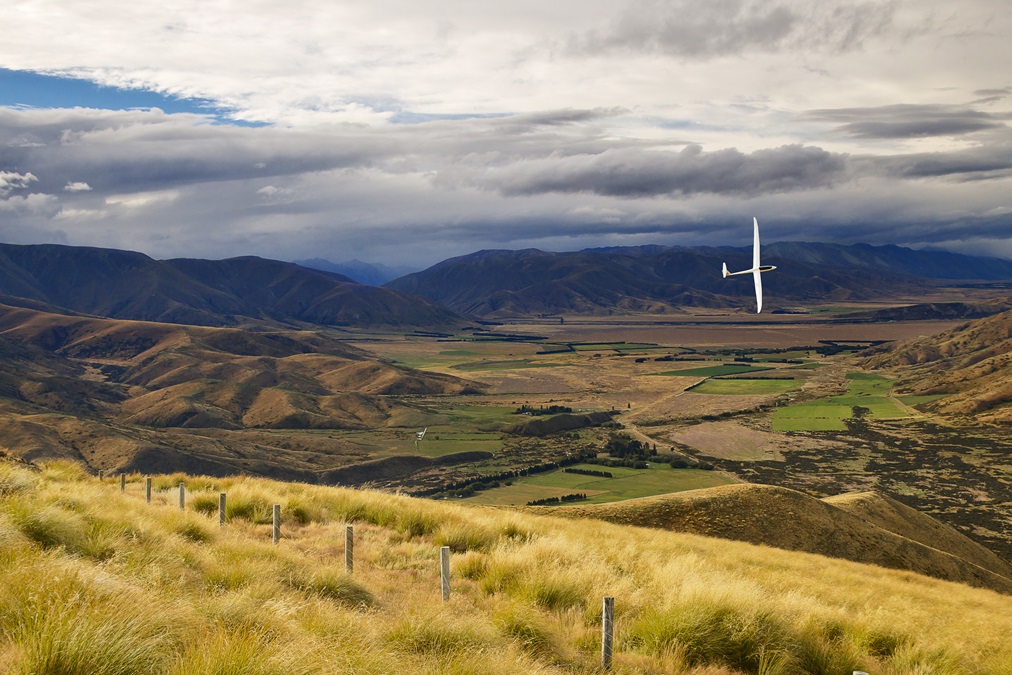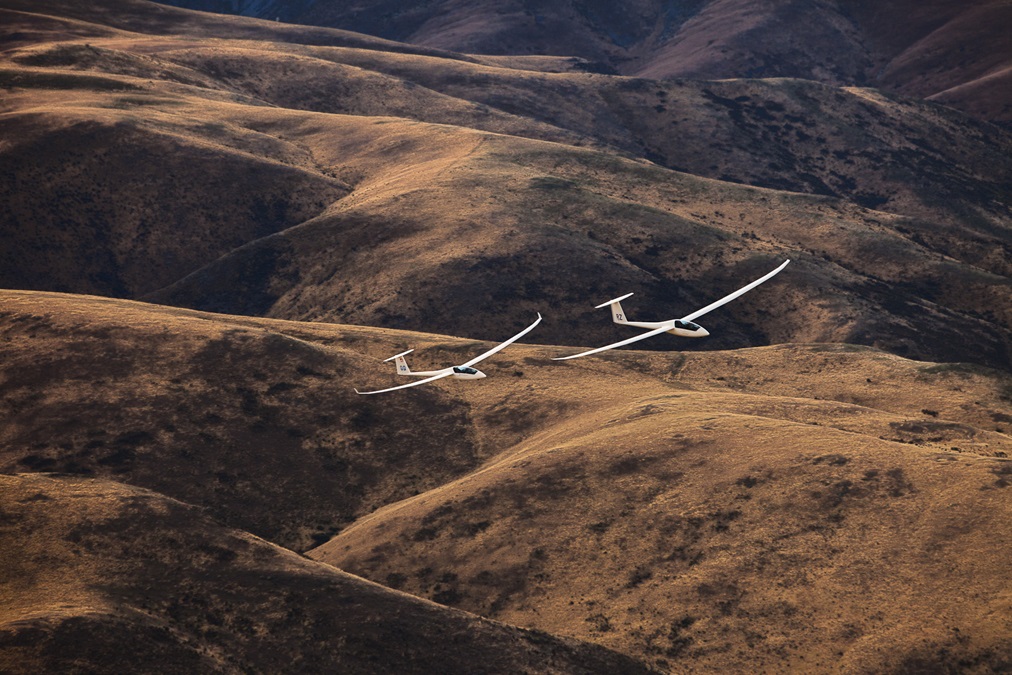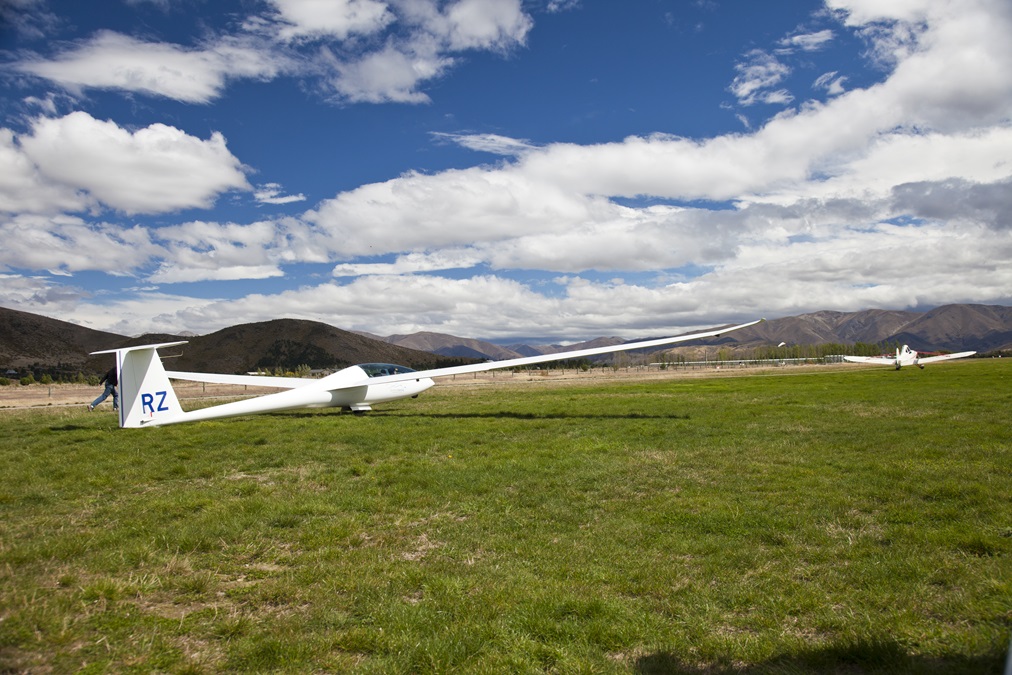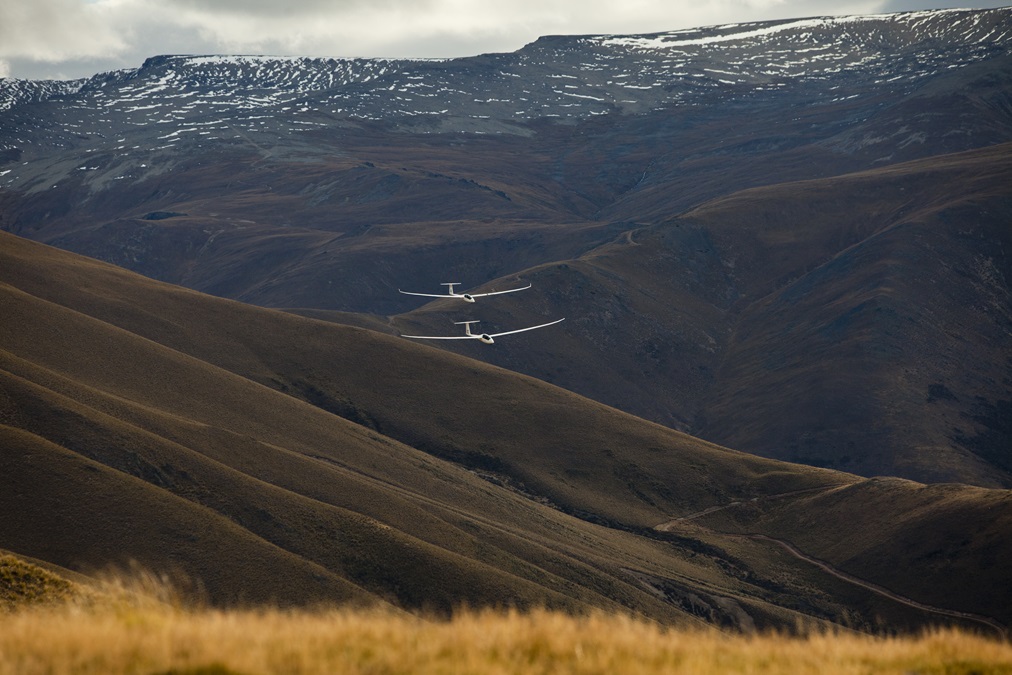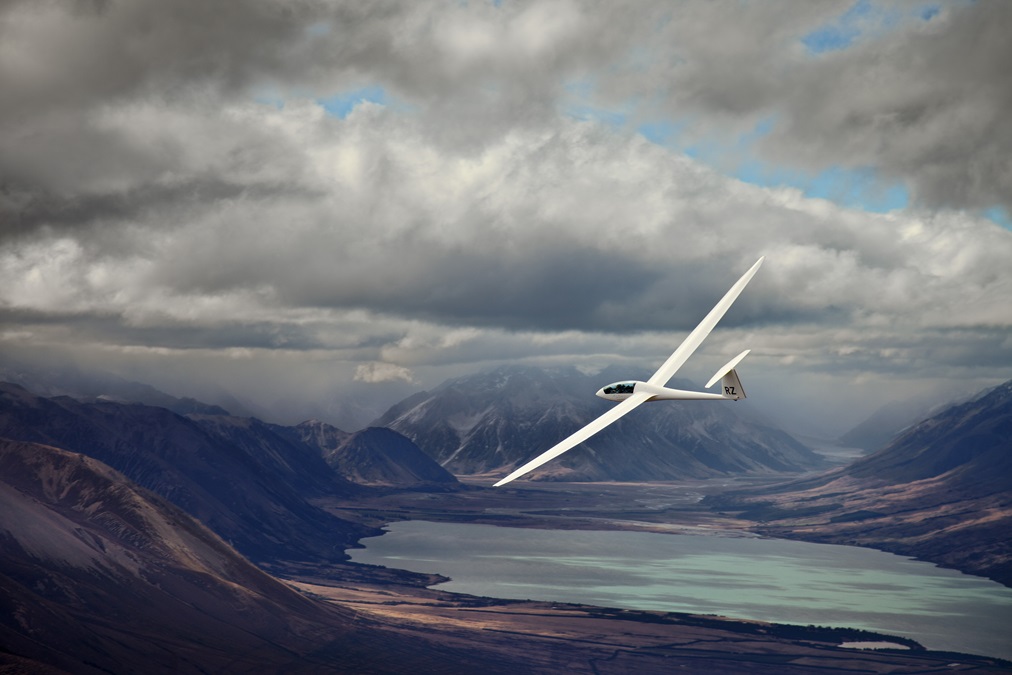In praise of soaring
Taking your flying to a higher power
By Charles Petersen
Photography by Mike Fizer
Like most group flying courses, the Mountain Flying course at Glide Omarama began with students introducing themselves: Where and what we fly and describing our flying experience. And like most such exercises, it naturally included some hangar flying. Marty Abbott’s story won hands down.
It began in 1974, at the age of 21, and Abbott had just received his Royal Canadian Air Force wings. He was assigned to fly the CF–104 in Germany. On his first training flight at RCAF Cold Lake, the engine on his Starfighter disintegrated at 40,000 feet while doing Mach 2.4. The 104 was now a glider, and its best glide speed was 260 knots. Faster than a waxed brick.
The modified C2 ejection seat that blew the pilot out the top had an explosive charge strong enough to yield 14 Gs, to ensure clearing the tail. At 1,000 feet agl Abbott pulled the D-ring handle, was slammed vertically 600 feet, and then was hit by a truck—or so it felt as the slipstream blew his flight suit to shreds. His attention was then diverted by the pain from losing all the fillings in the top of his mouth. Now that’s Gs for you. Then more pain: Through the ice and into chest-deep water. And his portable ELT didn’t work. Amazingly, after spending an hour or two knee-deep in water wearing his long underwear, Abbott’s little signal mirror brought him a helicopter rescue.
Abbott left the air force with 2,000 hours in fighters, and these days flies a Turbine Legend from Scottsdale, Arizona, but winters in Auckland, New Zealand. A flying friend convinced him to join him at Glide Omarama, on the South Island, home of “The Most Spectacular Soaring on Earth.” And they’re not exaggerating.
Abbott took a four-hour flight with Gavin Wills, founder and owner of Glide Omarama, in a high-performance Duo Discus, and proclaimed it his best flight ever. “It was absolutely quiet, and the glider’s plexiglass canopy offers incredible visibility ahead, to the side, and overhead. Flying so slowly just hundreds of feet or less over majestic mountains for hours with no engine, you could see everything. It was just incredible!”
My turn
As a glider pilot, Omarama has been a bucket list item for more than a decade. The combination of its location in the Southern Alps, the complex airflow dynamics produced by the winds interacting with the island’s topography, the super Duo Discus gliders, and instructors who are both excellent pilots and superb teachers make Omarama special.
Gliders work like bicycles with no pedals; they go forward by going downhill. So gravity is their engine, and altitude is their fuel. The challenge of soaring is to find and utilize atmospheric energy—lift, available as thermal, ridge, convergence, and wave—to climb again and again, sustaining flight for many hours and miles. The magic combination of powerful wind roaring across the Tasman Sea, sun, and the topography of New Zealand’s South Island sometimes offers all four types of lift on the same day.
The friction of the Southern Alps—reaching to 12,000 feet—slows the wind, causing it to curl inwards, and it’s amplified by sea breezes from both sides. Where two air masses collide, the air must go up. Find the distinctive clouds produced and so, too, do we. That’s convergence.
Ridge lift is found where wind blowing against a ridge or mountain must rise to go over it. Fly close to that ridge in the rising air, and we are lifted higher. The sun-warmed rock of a mountain face can rise until it breaks free into a turbulent and often narrow column of rising air called mountain thermals. These can be very challenging, calling for bank angles up to 60 degrees and constant corrections as the strong currents try to throw the aircraft out of the thermal.
The fourth is wave, a phenomenon not unlike the standing waves when a fast-flowing stream passes over a rock below the surface, creating a wave over the rock and secondary echoes downstream where no rocks exist. This form of lift has carried gliders to heights exceeding 50,000 feet.
Each day starts with a public weather briefing, and the complex and thorough material includes wind, cloud, thermal, and esoterica such as Skew-T graphs. Then the mountain flying course assembles upstairs in a private briefing room, and begins with a review of the previous day’s flights. Each glider is equipped with a logger that takes a three-dimensional fix every few seconds and creates a file that can be animated by the program See You, projecting a flight trace and topographical map on a white board. At intervals the speed-adjustable replay is paused so the staff can sketch wind and cloud info with dry markers on the board, enhancing the understanding of the source of the lift we enjoyed—or its evil twin, sink. Comments, questions, and opinions from students and instructors flow in animated fashion.
Next comes detailed insight into one of the types of lift, or advice on technique centering a thermal, or the structure of a wave and how to work your way into one, for example. We break at noon for lunch (very civilized, this sport), and will find our ships, gridded on the flight line by the staff, at the appointed hour. A Piper Pawnee 260 hooks up on a 200-foot line, and off we go. The instructor decides the tow height based on the conditions. My tows were between 4,000 feet and 1,500 feet; you are charged by the height.
Now the practical lesson—flying—and the fun begins. Our options are to tow to a ridge that offers lift from a wind against it, or to the clouds over a ridge that indicate the areas of convection. These clouds are formed when the rising air is adiabatically cooled 3 degrees Celsius per thousand feet until it reaches the dew point, where the invisible vapor condenses into tiny particles of liquid water, forming cumulus clouds that provide good markers for where to find our lift.
As a flatland pilot, I have an instinctive comfort with altitude below me, and it is counterintuitive to fly closer to terrain. But that is where the good lift is found.
There are protocols to keep us safe. For example, after a traverse, we always turn away from the rocks as we work back and forth in an area of lift, never succumbing to the temptation to circle as we would in a thermal. So we fly elongated figure eights back and forth in front of the ridge, where we have found good lift. And often, the wing tip is closer to the rock than it is to us, for that is where the lift is strongest. It is also important to keep enough speed to enable a nimble response should we encounter an unexpected downdraft, turning toward the safety of the valley where there is altitude below. Low and slow is a no-no!
Bowls can concentrate the lift of the wind, and my instructor—called “G”— takes us back to where I started a too-tentative entry by putting out the spoilers (air brakes) to begin at the same altitude. G then flies in close to the bowl, turning with the wings parallel to the slope around the bowl, which yields a rich gain in altitude. I try it again, mimicking his technique, and the easy success is exhilarating. We spend hours exploring the effects of different wind angles and different topography: spurs off a ridge line, flattened tops of ridges, lee side turbulence.
G shows empathy for the workload of the uninitiated, never overloading me with too much information, but always keeping me on a steep learning curve. After almost four hours, the day is still flyable with ample lift, but I have had enough. We return to the field, and there is one more surprising lesson. The wind a few thousand feet over the runway is light from the west, but the wind on the ground is approximately 25 knots from the east. It is a reverse wind gradient, the wind getting stronger as it gets closer to the ground. Woe to he who lands downwind; the airspeed will drop on approach, and lowering the nose to pick up speed will put the aircraft into lower airspeed yet.
Back again
The next day’s focus is convergence. G combines his extensive local knowledge with the information from the weather briefing and his experience reading the clouds to locate and utilize this lift. If one of the two converging winds is colder or has higher humidity, it will form a cloud base lower than the other air mass, resulting in a raggedy line of cumulus with a shelf-like wall between the two—beside which we find lift. Flying close to the curtain of misty cloud that joins the two layers, often with one wing right in this cloud, the lift is good. We cover a different area of the island today, and will each day. G knows every ridge by name, and by what he can expect, and shares his knowledge well.
Convergence also can be found in the valleys and plains of this relatively small island’s incredibly varying terrain. We use it the next day to go north to the large mountains that form the impressive watershed along the west coast—then we start climbing the mountains. The scenery is like a sequence of picture postcards. The lakes have that unique turquoise color from the glacial sediment emulsified in the water. The mountains, in the middle of mid-summer, have remains of snow, even on the dry side to the east of the divide. And we cross from one set of peaks to another, over valleys with rivers and lakes, but most of the flight is spent at altitudes of only a few hundred feet agl, or less. I can’t stop feeling like a country kid on his first visit to the big city.
Over these peaks, the slope’s orientation to the sun angle plays the biggest role in choosing our flight path. A steep slope of bare rock facing the sun will become relatively very hot, and this heat is transferred to the air touching it—and keeps heating it as it accelerates, flowing up the rock face to the summit, where it mixes with slower, less heated air from the shady side, forming gusty powerful thermals that challenge the pilot’s skill in staying centered in the fastest-flowing core of the thermal. When we have sufficient height, we can fly to the next peak. The Duo Discus, with its 65.5-foot wingspan, has a best glide ratio of almost 45:1, and these long legs can take it amazing distances.
Bucket list
Although the weather forecast had been pessimistic about the week, we flew great flights four out of five days—the average during the season, the antipodal summer. It’s a long way to travel from the States, but the scenery in The Lord of the Rings films was not computer generated, and you’ll see it up close and personal. Make this a red-starred item on your bucket list. To maximize your time at Omarama, if you’ve only flown power, visit a local soaring club; most offer a five-lesson introductory deal, and conversion from power is an easy task. But you won’t believe how important your rudder has become.
Charles Petersen is a retired business executive and recovering sailboat racer who began flying in 1998, and is now a flight instructor and aerobatic instructor in gliders, with more than 2,300 hours.
